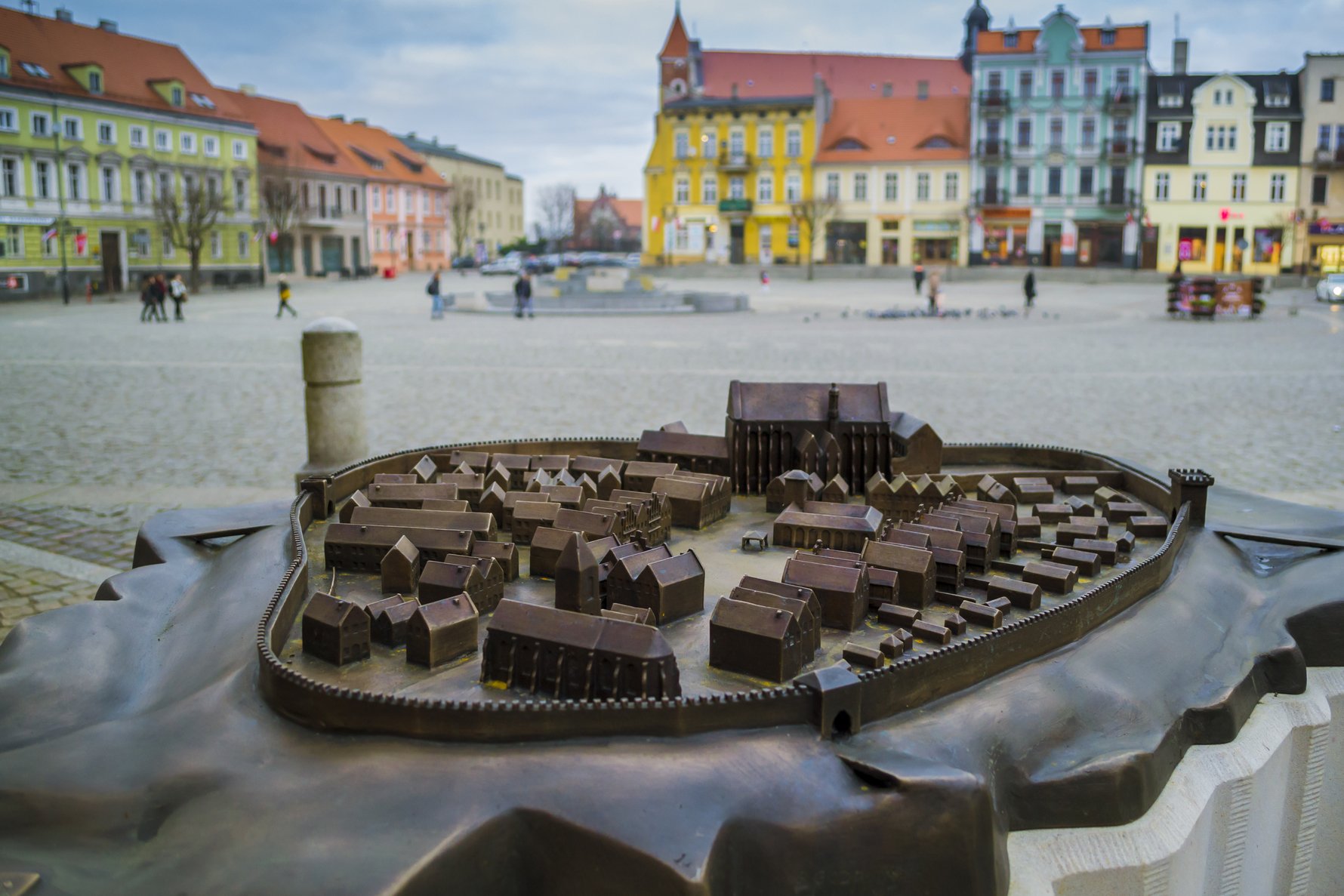
Gniezno Cathedral
First built in 970CE, burnt down and rebuilt at least three times, the Primatial Cathedral Basilica of the Assumption of the Blessed Virgin Mary and Shrine of St. Adalbert AKA Gniezno Cathedral is one of the oldest churches in the country! Built as a simple church by Mieszko I, it was his son and successor, Bolesław I the Brave, who interred the body of St. Adalbert (Sw. Wojciech in Polish) in a fancy gold tomb and elevated it in status, much to the approval of the head office in Rome! St. Adalbert was a Czech missionary sent to the Baltic coast in 997 to convert the pagan tribes who lived there and was subsequently decapitated and martyred. He was bought back by the church for his body's weight in gold and, upon being interred in the cathedral, became a pilgrimage site for Catholics worldwide. Consequently, this is an incredibly important site for Poles, not just Catholics.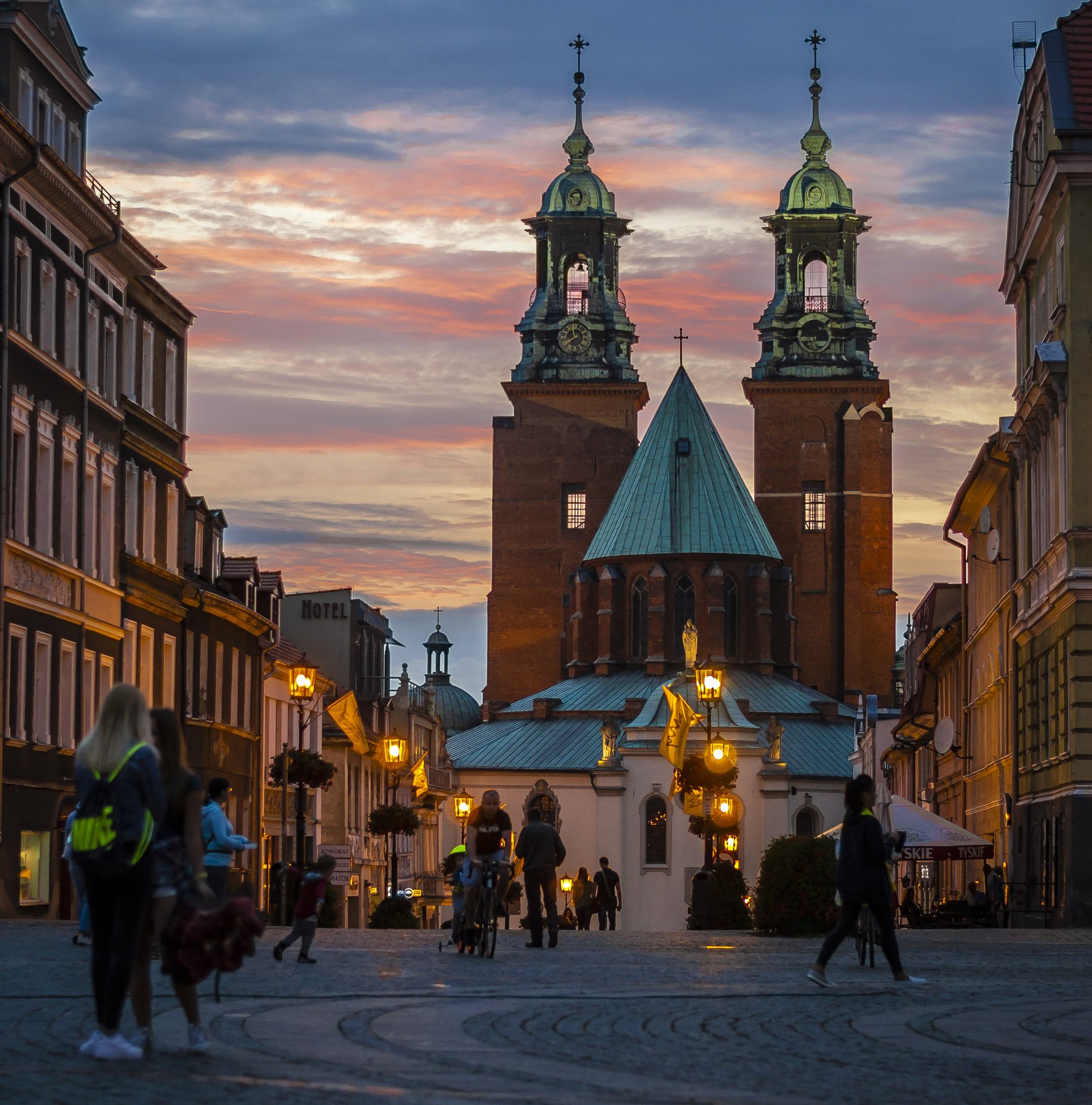
Before you even enter the building, you will be blown away by the entrance, known in Poland as the Gniezno Doors. They contain 18 bronze panels, each masterfully engraved with scenes from the life of St. Adalbert of Prague, a 10th-century Czech missionary and eventual martyred after attempting to convert the Old Prussians up north (you can see this in one panel, which depicts a Prussian pagan moments before decapitating him).
The most recent, Gothic iteration of the church's interior was built between 1342 and 1390 and embellished over the course of time, and nowadays it is the Baroque flourishes that steal the show. At one end, the elaborate gold confessio of St. Adalbert is situated, a stunning piece modelled on the tomb of St. Peter in Rome. St. Adalbert remains are the most important Catholic relic in the country. The cathedral also contains a crypt, accessible near the entrance, which holds Poland’s oldest gravestone, the coffins of the country’s past primates (the bishop variety, not mere placental mammals), and the pattern of the tiled floor (which also appears on the 10zł note). The bell tower is open in summer, offering a nice panorama of the town and is only 231 steps to negotiate.
NOTE: Sightseeing is not possible on Sundays.
Guided tours of the Cathedral are available, read our listing for more details!
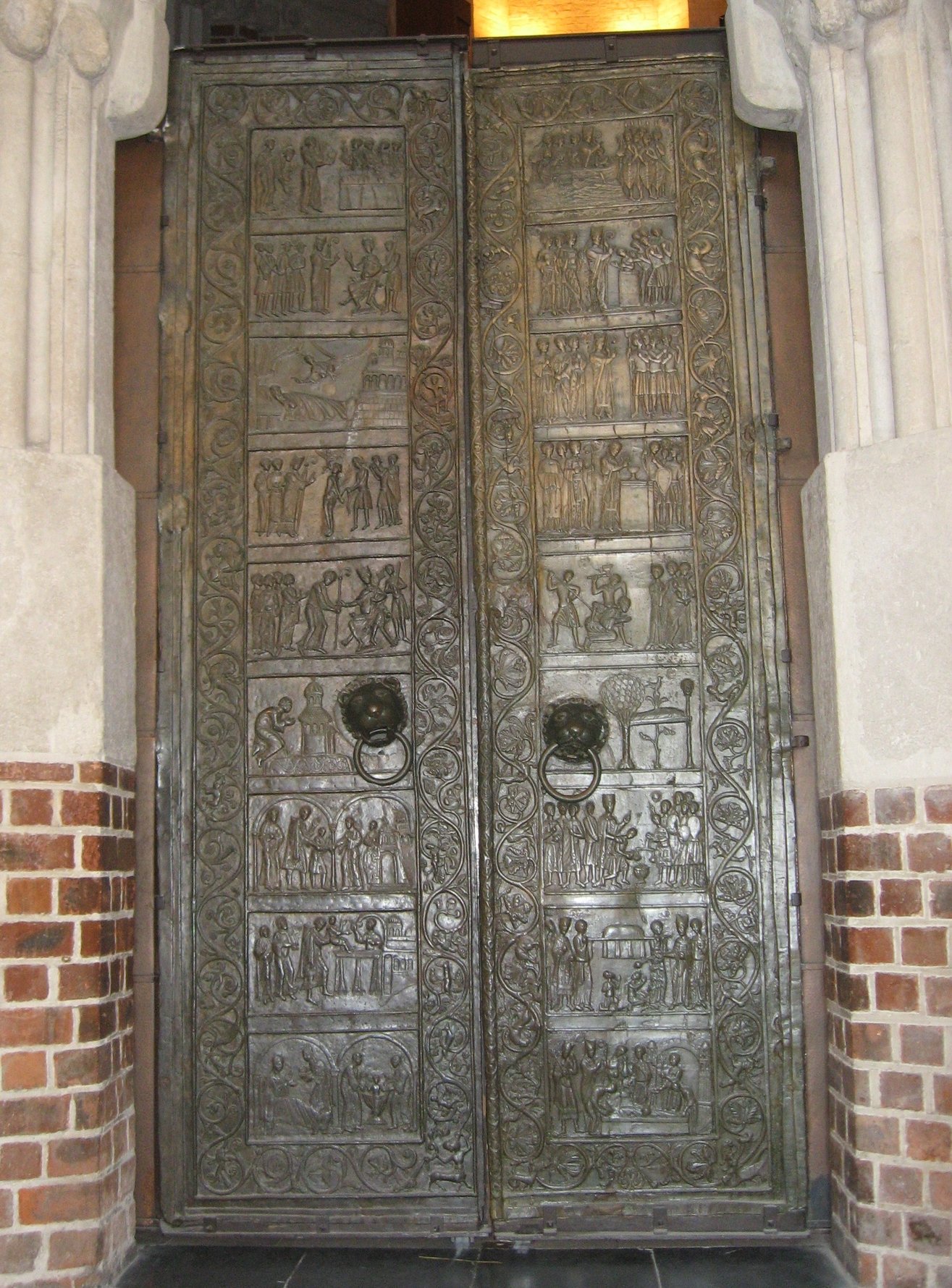
|
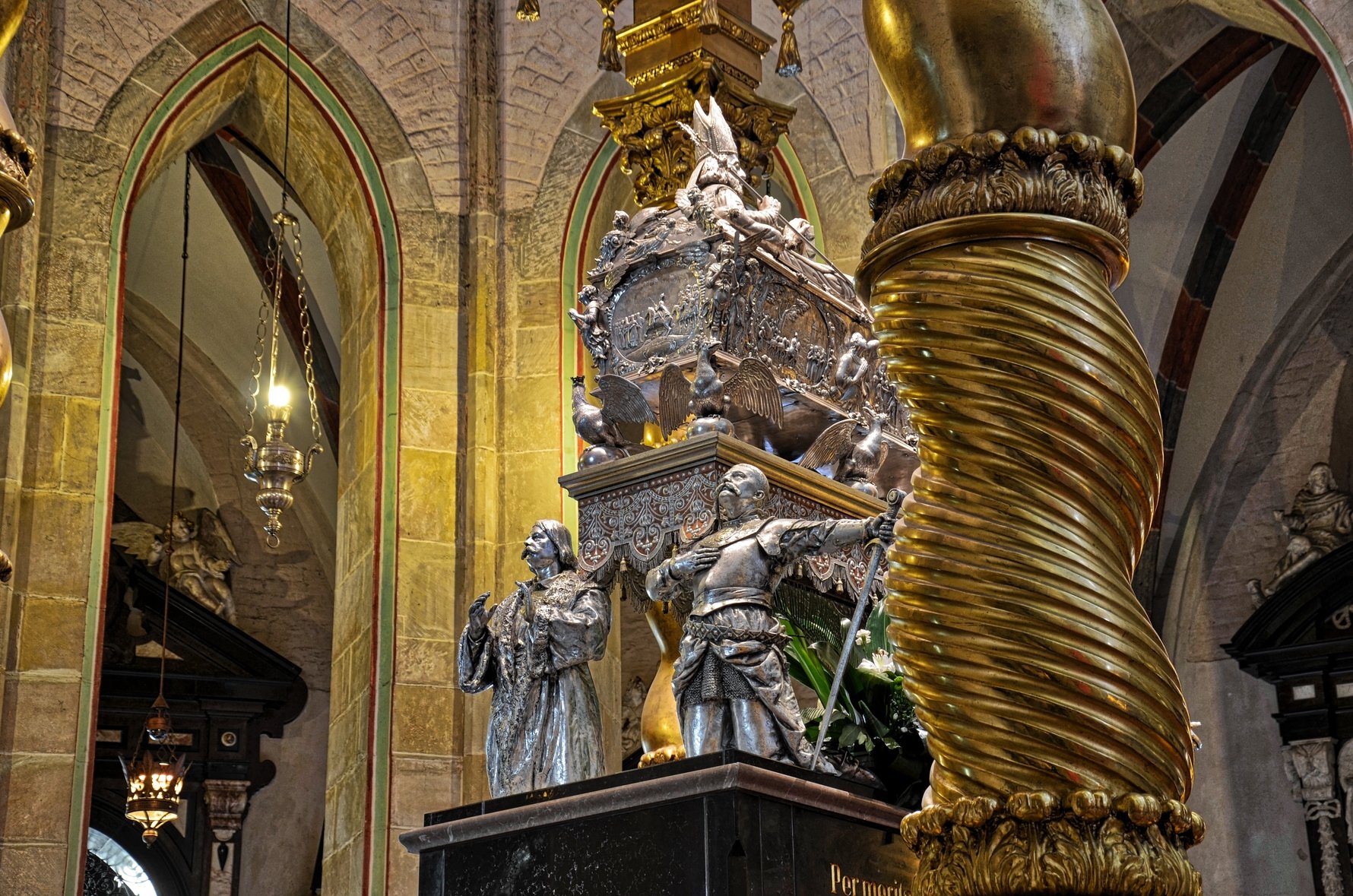
|
Holy Trinity Church
While it's easy to feel a bit 'churched out' in a place like Gniezno, one other site that is absolutely worth visiting is the Holy Trinity Church. It features a Gothic tower, features a ‘millennium clock’ complete with a moving figure of our mate, St. Adalbert! Outside are the only skeletal remains of the ancient city walls which once ringed Gniezno.
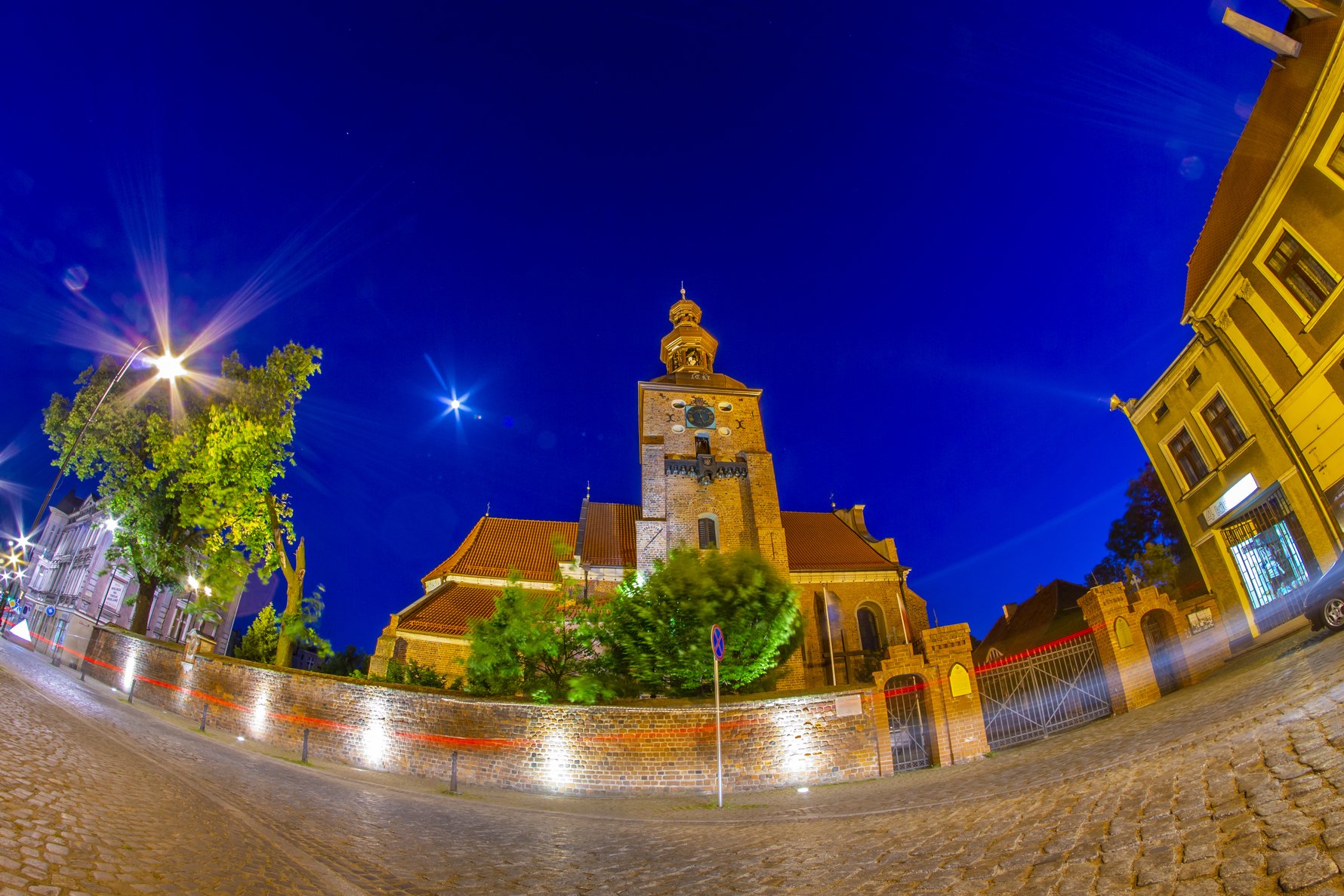
Gniezno Archdiocese Museum
If your eyes are still hankering for the sight of more treasure after a trip to the Cathedral, head to the Gniezno Archdiocese Museum to view a lavish collection of ecclesiastical riches: golden goblets, embroidered vestments, state gifts received by cardinals, oil paintings, coffin portraits and even a chalice purporting to have once belonged to St. Adalbert are all presented here. A feast for the eyes that is sure to present moral dilemmas for kleptomaniacs.Museum of the Origins of the Polish State
Housed in a not-so attractive communist-era building, this museum offers more archaeological displays that are less ecclesiastical, however, through the other media available, the museum's interpretation overall is still angled on a pro-church bias. Of particular note, on of the inhouse films presented speaks of the might of the Polish empire and Christian religion with the "brave and just soldiers of the great King Boleslaus" pitted against "hordes of savage Pagans". The institution is set up more for school children, but it will keep you stimulated nevertheless.The Royal Trail
Trakt Królewski (ENG: The Royal Trail) refers to the various monuments of Polish kings around Gniezno's old town, specifically the first 5 of the Piast monarchs who were coronated here. Accompanying these fantastic statues you will also find a band of rabbits scattered around the place, taking on other historical characters ('rabbit' is królik in Polish and king is król, so this mascot is ideal for the city of kings). All these sculptures, as well other landmarks and scale models of Gniezno in times past have been incorporated into a fun mobile app called Królika Goń (ENG: Rabbit Chase) which you can download from the iOS App Store or Google Play. This is a great activity for families with young children and, during times of pandemic with museums and other institutions closed, it's a great alternative for learning about the city!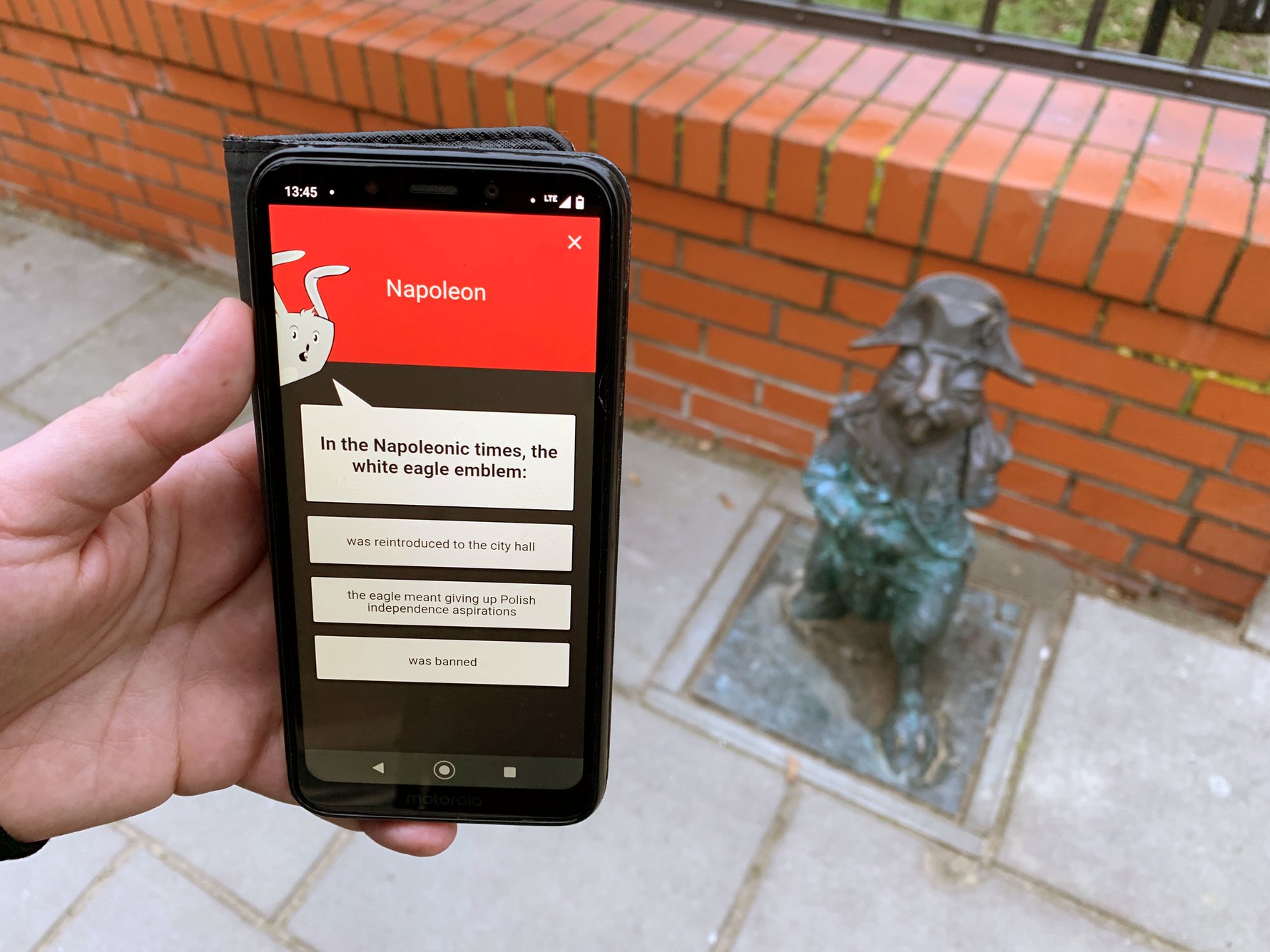

Photo by S. Uciński, © Urząd Miejski w Gnieźnie |

Photo by S. Uciński, © Urząd Miejski w Gnieźnie |

Photo by S. Uciński, © Urząd Miejski w Gnieźnie |



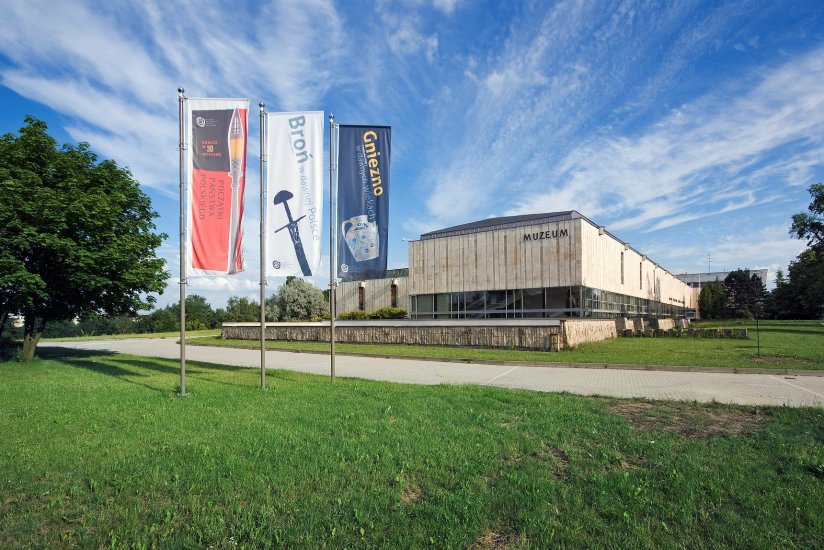
Comments